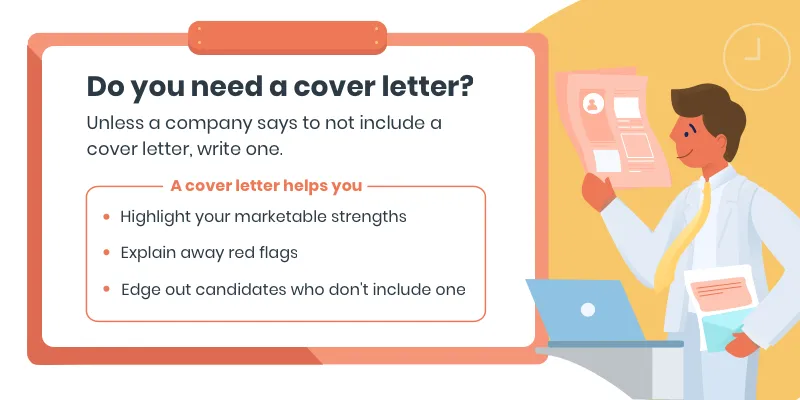What Is a Cover Letter?
A cover letter is a one-page document that you submit as part of your job application alongside your resume. It serves as an introduction, allowing you to highlight your relevant skills, experiences, and qualifications in a concise and compelling manner. Unlike a resume, which provides a factual overview of your career, a cover letter lets you showcase your personality, express your enthusiasm for the role, and explain why you’re a great fit for the company.
Why Is a Cover Letter Important?
In today’s competitive job market, a well-written cover letter is crucial. It’s your chance to make a positive first impression and differentiate yourself from other applicants. A cover letter provides context to your resume, helping the hiring manager understand your career goals and how your skills align with the job requirements. It demonstrates your writing abilities, attention to detail, and genuine interest in the position. Many employers consider a cover letter as an essential part of the application process and may even discard applications without one.
Key Components of a Cover Letter
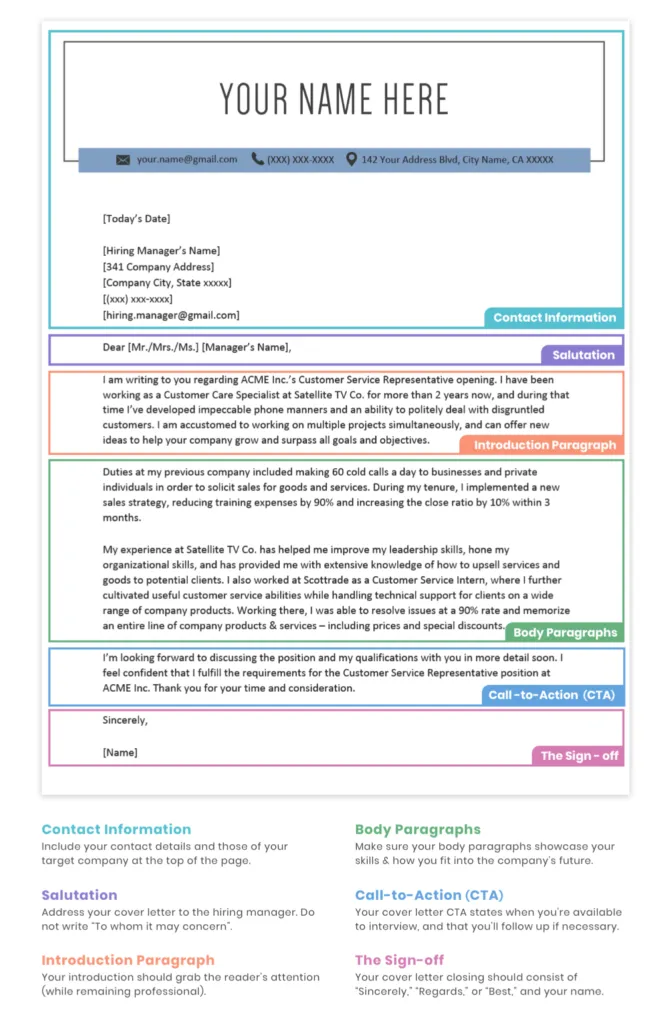
A strong cover letter comprises several key components that work together to create a persuasive narrative. Each section plays a vital role in presenting you as a qualified candidate. Understanding these elements will help you structure your letter effectively and ensure you include all the necessary information.
Your Contact Information
Begin with your contact details in the top left or right corner. Include your full name, phone number, email address, and optionally, your LinkedIn profile URL. This ensures the hiring manager can easily reach you. Maintain a professional email address (e.g., firstname.lastname@email.com) to make a good impression.
Date and Recipient Information
Below your contact information, include the date and the recipient’s details. If you know the hiring manager’s name and title, address the letter to them directly. If not, use a general salutation such as ‘Dear Hiring Manager’. Researching the company’s website or using LinkedIn can often help you find the correct person.
The Salutation
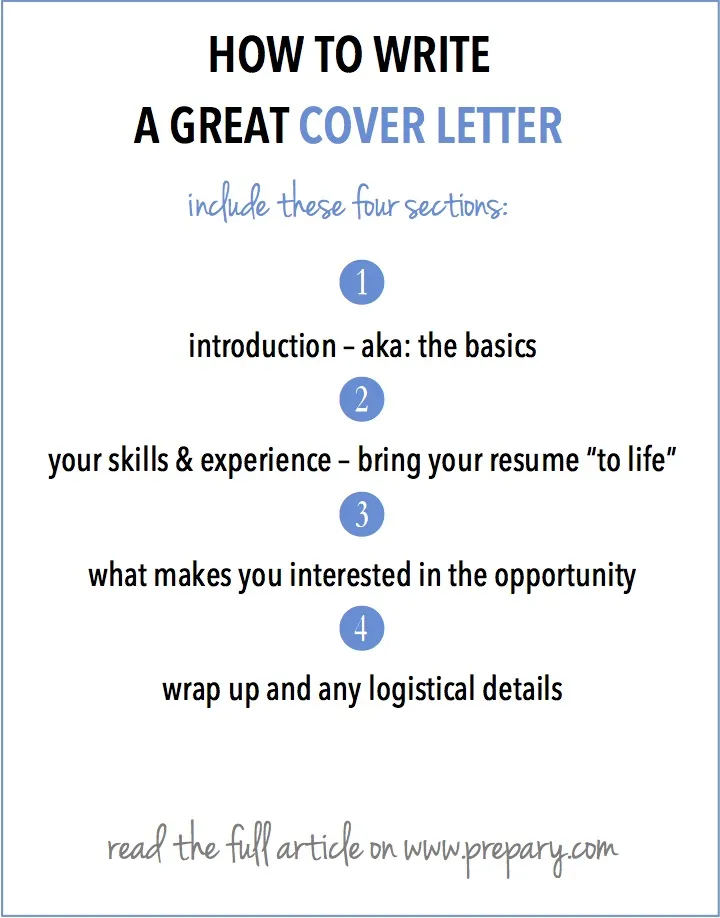
Start your letter with a professional salutation. ‘Dear Mr./Ms./Mx. [Last Name]’ is generally preferred when you know the recipient’s name. If you don’t know the name, use ‘Dear Hiring Manager’ or ‘Dear [Company Name] Team’. Avoid generic greetings like ‘To Whom It May Concern’.
The Introduction
The introduction is your first opportunity to capture the reader’s attention. State the position you’re applying for and briefly mention how you learned about the opportunity. Express your enthusiasm for the role and the company, and provide a compelling hook that highlights your key qualifications or a significant achievement relevant to the job. Keep it concise and impactful.
Highlight Your Key Skills and Experiences
The body of your cover letter should highlight your skills and experiences that align with the job requirements. Instead of simply repeating your resume, provide specific examples of how you’ve demonstrated these skills in past roles. Use the STAR method (Situation, Task, Action, Result) to structure your examples and quantify your achievements whenever possible. This section is where you showcase your value and prove that you are a good fit for the position.
Tailor Your Letter

Always customize your cover letter for each job you apply for. Generic cover letters are easily spotted and often discarded. Research the company and the specific role to understand their needs. Mention the company’s values, mission, or recent projects that resonate with you. Show how your skills and experiences directly address the requirements outlined in the job description. Tailoring demonstrates your genuine interest and increases your chances of getting noticed.
Body Paragraph 1 Focus on Value
In the first body paragraph, focus on the value you can bring to the company. Explain how your skills and experiences align with the job’s requirements. Provide specific examples of your achievements, emphasizing the results you achieved in previous roles. Use action verbs to describe your accomplishments and quantify your impact whenever possible. Show the hiring manager how you can contribute to the company’s success from day one.
Body Paragraph 2 Show Your Enthusiasm
The second body paragraph should showcase your enthusiasm for the role and the company. Explain why you’re excited about the opportunity and what attracts you to the organization. Mention specific aspects of the company’s work or culture that resonate with you. Demonstrate that you’ve done your research and genuinely want to be a part of their team. Express your career goals and how this position fits into your long-term aspirations.
The Closing
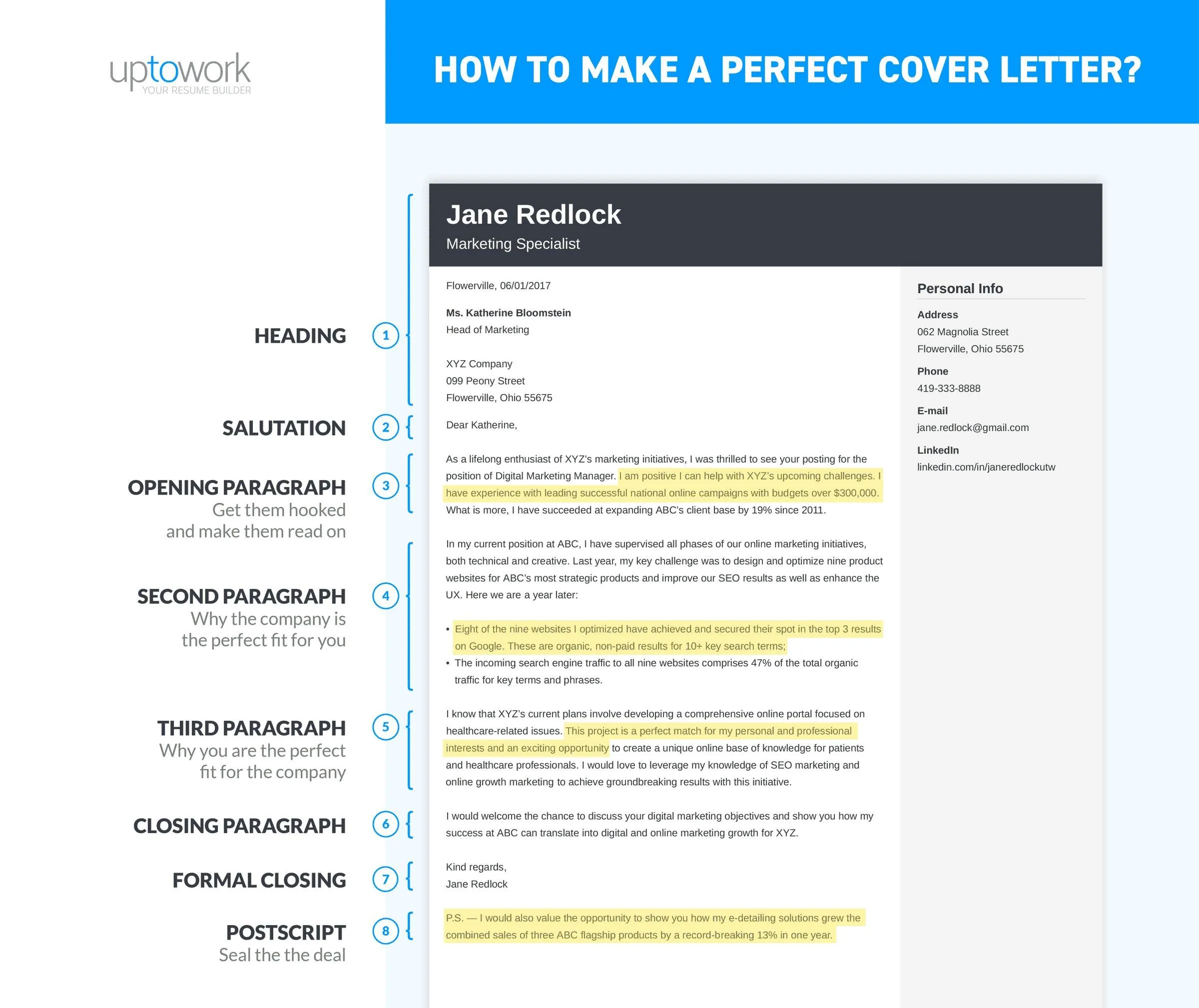
End your cover letter with a strong closing statement. Reiterate your interest in the position and thank the hiring manager for their time and consideration. Include a call to action, such as expressing your availability for an interview or stating that you look forward to hearing from them soon. Keep the closing professional and concise.
Thank the Reader and Express Interest
Thank the reader for their time and consideration. Reiterate your strong interest in the position and the company. Express your enthusiasm for the opportunity to discuss your qualifications further in an interview. Use a professional closing such as ‘Sincerely’ or ‘Best regards,’ followed by your full name.
Formatting and Design Tips
The formatting and design of your cover letter are just as important as its content. A well-formatted letter is easy to read and creates a positive impression. Pay attention to these tips to ensure your cover letter looks professional and polished.
Choose a Professional Font
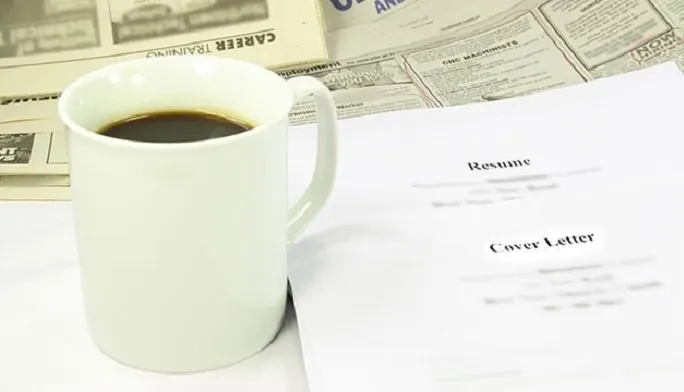
Select a professional and readable font. Avoid overly decorative or unusual fonts that can be distracting. Common and accepted fonts include Times New Roman, Arial, Calibri, and Helvetica. Choose a font size between 10 and 12 points for optimal readability. Ensure the font is consistent throughout the entire document. See the image below for good example.
Keep It Concise
Aim for a one-page cover letter. Hiring managers often have limited time, so it’s crucial to be concise and focused. Get straight to the point and avoid unnecessary jargon or lengthy paragraphs. Use clear and direct language. The image below shows a good cover letter in one page.
Proofread and Edit
Proofread your cover letter carefully before submitting it. Typos and grammatical errors can undermine your credibility. Check for spelling mistakes, punctuation errors, and sentence structure issues. Consider asking a friend or family member to review your letter for an extra set of eyes. Use grammar and spell-checking tools, but don’t rely on them entirely. The image below shows a good example after the editing.
Common Cover Letter Mistakes to Avoid
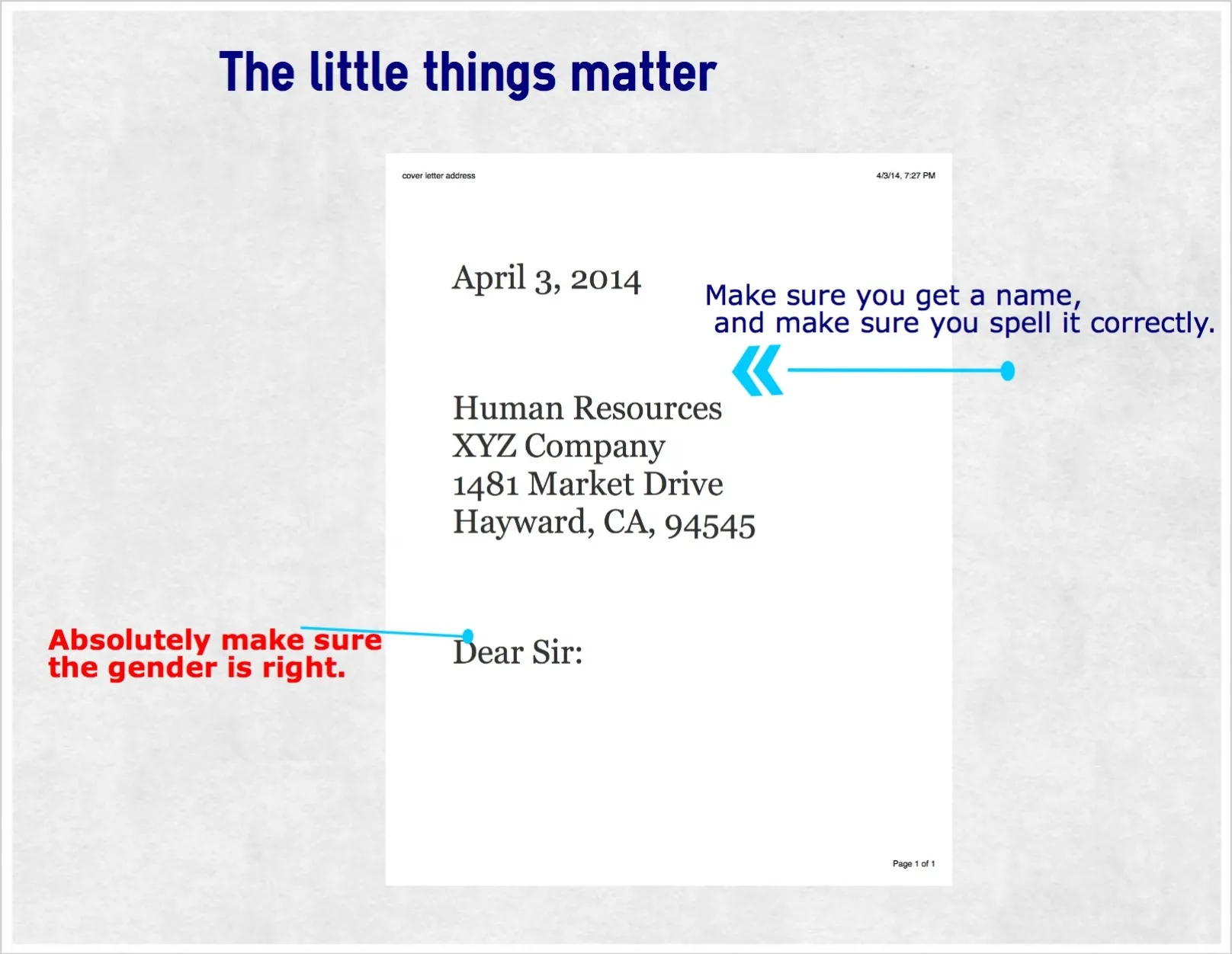
Several common mistakes can significantly reduce your cover letter’s effectiveness. Avoid these pitfalls to ensure your application makes a positive impression.
Using Generic Language
Avoid using generic phrases and clichés that can make your letter sound impersonal. Phrases such as ‘I am a hard worker’ or ‘I am a team player’ are overused and don’t provide any specific information. Instead, use specific examples and tailor your language to the specific job and company. Demonstrate your unique skills and experiences.
Typos and Grammatical Errors
Typos and grammatical errors are a major turn-off for hiring managers. Always proofread your cover letter carefully before submitting it. Pay close attention to spelling, punctuation, and sentence structure. Use grammar and spell-checking tools, and ask someone else to review your letter for any mistakes you may have missed.
Not Tailoring Your Letter
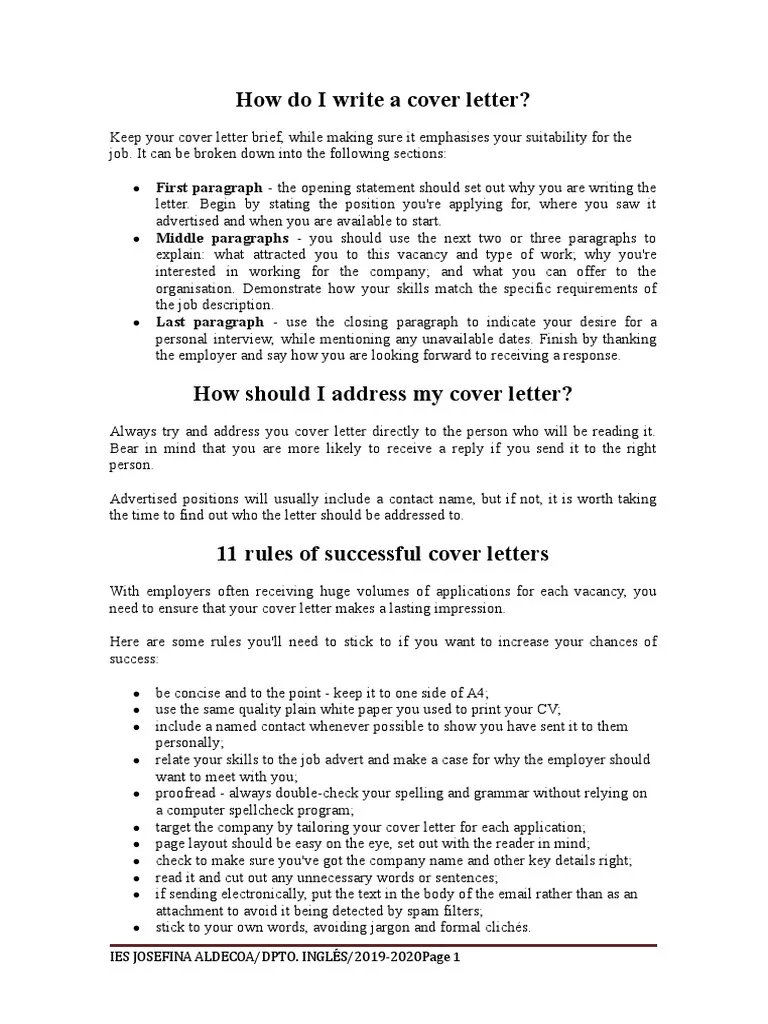
Failing to tailor your cover letter to each job is a common mistake. Generic cover letters don’t show that you’ve taken the time to research the company and understand their needs. Always customize your letter to highlight the skills and experiences that are most relevant to the specific job. Demonstrate your genuine interest in the role and the organization.
Cover Letter Examples
To further illustrate the principles discussed, here are a few examples of cover letters to get you started.
Entry-Level Cover Letter Example
Here’s an example of a cover letter for an entry-level position. The format is basic and easy to customize. This covers all the aspects in an entry-level application, highlighting skills and experiences while expressing enthusiasm for the job.
Experienced Professional Cover Letter Example
Here’s an example of a cover letter for an experienced professional. This example showcases more complex and rich experiences and skills for a high-level position and makes the application more appealing.
